- Home
-
Our tours
- Our tours
- Africa
- Asia
- Latin America
- North America
- Oceania
- Holiday types
-
Accommodation
- Accommodation
- Africa
- Asia
- Latin America
- North America
- Oceania
-
Practical info
- Practical info
- Africa
- Asia
- Latin America
- North America
- Oceania
- Info & Contact
- Blog
The best markets in Asia
24.04.2019 | updated: 30.01.2024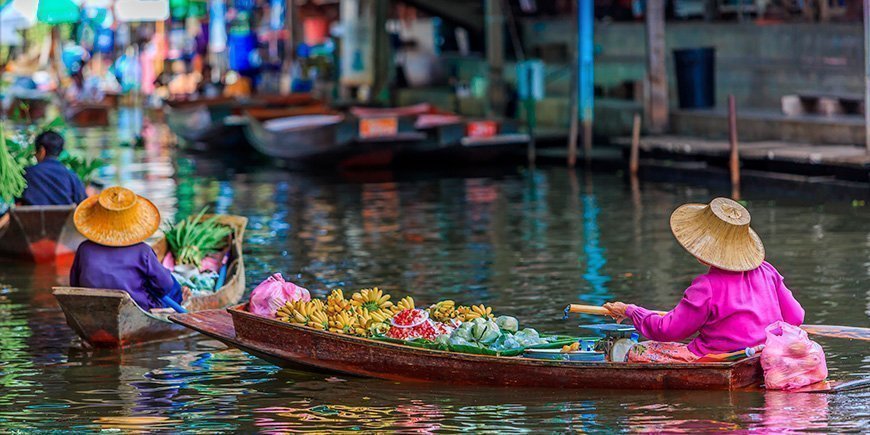
There are countless amazing, big, stressful and inviting markets in Asia.
You will not only find food markets, but also markets selling everything between heaven and earth, where there’s almost nothing you can’t buy!
Put on your good walking shoes and set off early to experience the market with fewer visitors – this will also give you the chance to haggle.
Tip: Take no more money with you than you need and keep it tucked away.
Chatuchak Weekend Market, Bangkok
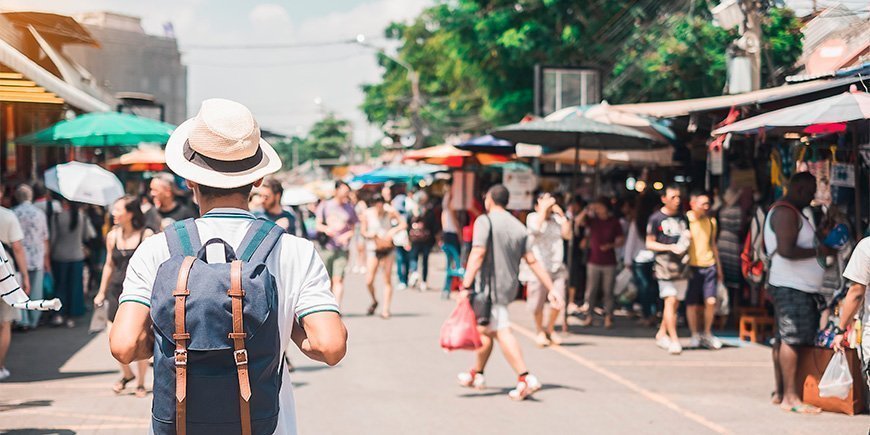
When visiting the Thai capital, Bangkok, you should treat yourself to a trip to the Chatuchak Weekend Market, which is open on Saturdays and Sundays as a classic market. Explore the 15,000+ stands and buy gifts for the whole family.
You can buy everything from wood carvings, scarves in all manner of colours, masses of shoes and clothes, bags or even animals. The market is divided into sections by theme, but can still be a little hard to find your way around. If you find something you just can’t do without, it is probably a good idea to buy it right away as you might not find it again.
The market is said to be one of the world’s largest, and one thing is for sure, it can easily take the best part of the day to find the real bargains and the things you want with so many stalls. Remember to take a well-deserved break along the way and sink your teeth into some of the snacks sold at the market.
Tianshan Tea City, Shanghai
Tea, tea and more tea. Tianshan Tea City is a mecca for everything to do with this hot drink. The tea comes from all over China, and it’s a good idea to buy some to take back home with you so you can enjoy a cup on a cold evening back in Blighty.
At Tianshan Tea City, you can, for example, learn the art of making the ultimate cup of tea, see tea artworks, taste exquisite tea and learn how to recognise the best tea leaves. The market, which is open every day, has 150 stalls and sells several thousand varieties.
When you visit one of the 150 stalls, you’ll soon find yourself being given one sample after another – and there’s a very good chance that you’ll find a favourite. Try, for example, Oolong tea, a black, fermented tea said to be the first Chinese tea, or blooming tea, which unfolds and looks like a flower when boiling water is poured on the leaves.
Central Market, Phnom Penh
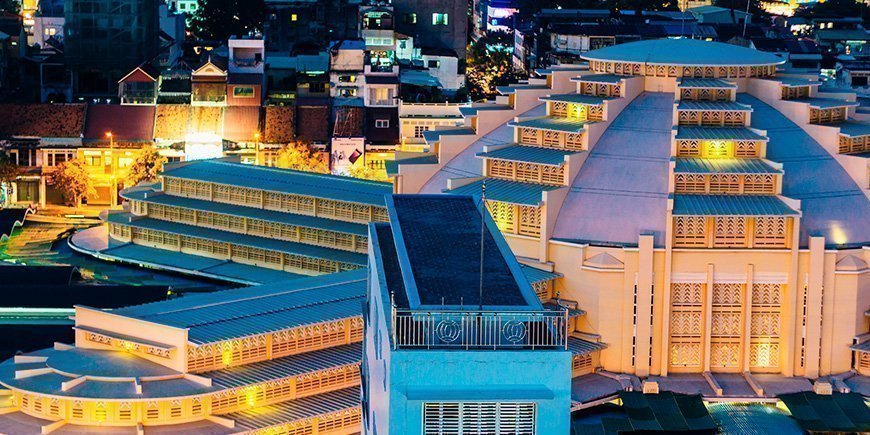
In the heart of Phnom Penh in Cambodia is the Central Market, which in Khmer is known as Phsar Thmei, which means new market. The building, which houses the market, is yellow and constructed in art deco style during the French colonisation of the country.
The market has a large dome in the middle, from which four wings extend with stalls from one end to the other. Here, you can buy everything from food, flowers, scarves, silverware, clothing and jewellery to suitcases and electronics. But remember to wear your haggling hat as the market is known for charging slightly too high prices.
The market is open from early morning until early evening, and if you’re not into shopping for souvenirs, it’s an experience in itself just walking around the market, soaking in all the impressions around you.
Ubud Art Market, Ubud
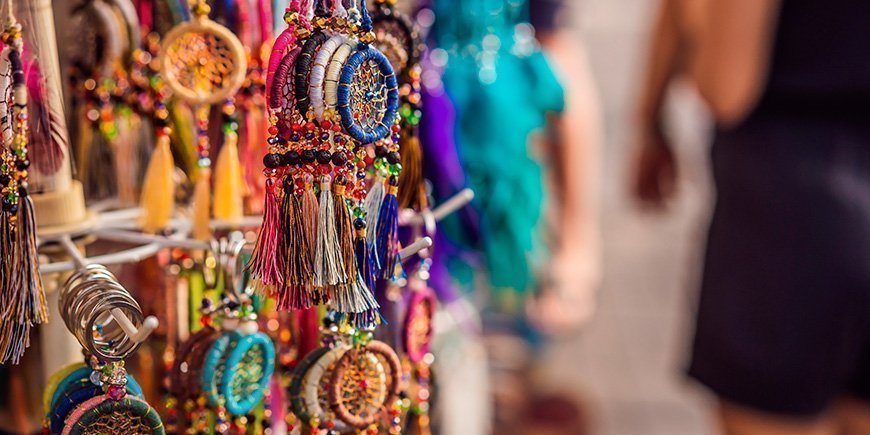
If you’re into crafts, the market in Ubud in Bali may be the one for you.
Known locally as Pasar Seni Ubud, the market, which is situated in the heart of the city, is open every day from morning to late afternoon.
You can buy everything from lovely woven bags, beautiful baskets in all manner of shapes and sizes and clothing of every kind and colour. If you’re into paintings and sculptures or need a small snack, you will also find it at Ubud Art Market. There’s not actually anything this market doesn’t have – and it’s mostly handmade by locals from the area.
The best time to visit the market is in the morning because the Balinese are of the conviction that if sales are good in the morning, they’ll be good all day – which means you’re more likely to pick up a bargain. This conviction is called “pegarus dagangan” by the Balinese.
Toyosu Fish Market, Tokyo
The old fish market, Tsukiji Fish Market, which was famous for its tuna auctions, reopened as Toyosu Fish Market in autumn 2018. The market is home to more than 600 vendors and is the world’s largest, covering an area of more than 40 hectares.
You can taste different, delicious dishes from the 40 or so food stalls, but one of the major draws is the tuna auction, which takes place between 5.30 and 6.30 in the morning. Most stalls don’t open until around 7 am, and you can enjoy a delicious piece of fish for breakfast. If you’d like to visit the market, please note that it is closed on public holidays, Sundays and often on Wednesdays.
The floor of the new fish market is white apart from the tuna auction area, where it is green. The reason for this is that the quality of the tuna is determined by the red meat of the fish. The green floor really brings out the red, allowing buyers to better determine the product’s quality and price.
NB: It’s a good idea to book a seat to be sure of getting a good one for the tuna auction.
Ben Thanh Market, Ho Chi Minh City
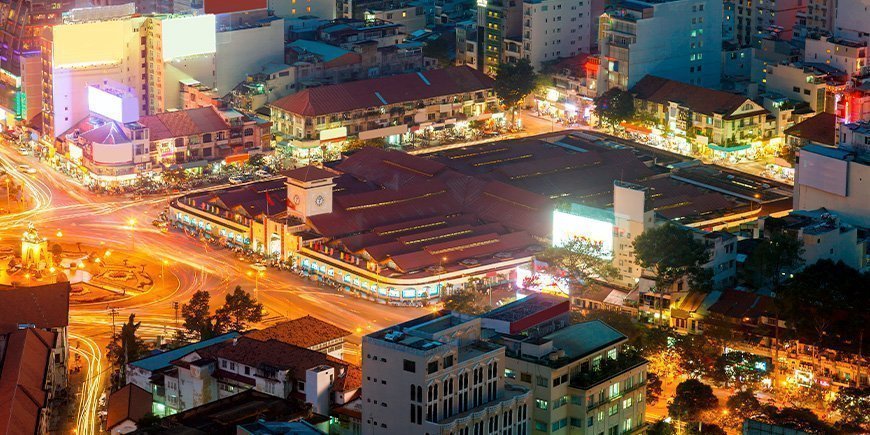
In District 1 in the centre of Ho Chi Minh City in Vietnam, you will find Ben Thanh Market. You can’t miss the large, square building, which is one of the city’s oldest landmarks, as you approach the place.
The building houses a warren of aisles, where you can buy all manner of souvenirs and local crafts, and is so huge that you might feel as you’re lost. But don’t worry! If you need help finding you way out again, it should be there.
In the evening, one food stall after another pops up outside the building, and you can taste everything from the Hanoi dish Bun Cha to Bánh xèo, which are rice pancakes from the Mekong Delta. The market offers some wonderful experiences in a very authentic atmosphere – 60–70% of visitors are Vietnamese themselves.
Luang Prabang Night Market, Luang Prabang
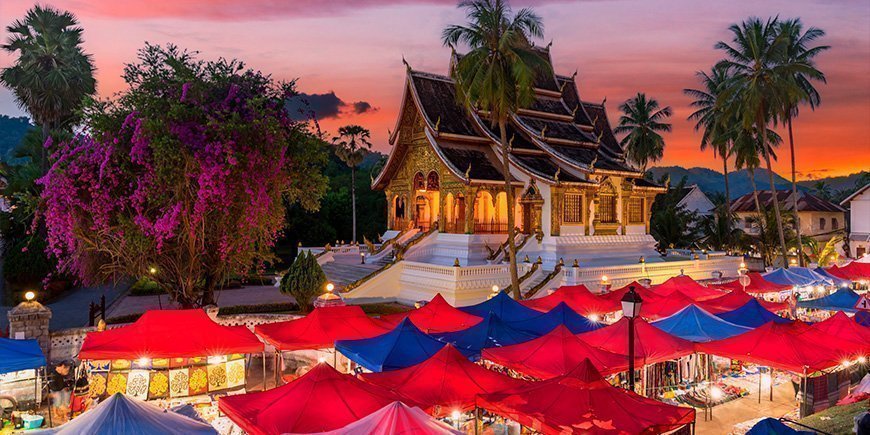
One thing you mustn’t miss if you’re in Luang Prabang in Laos is the city’s night market.
From 5 pm to around 10 pm, the street is closed to vehicles, and the small stalls selling handicrafts such as ceramics, rugs, lamps, silk scarves and much, much more besides pop up on Sisavangvong street.
The city centre is not that big, so it’s virtually impossible to miss the market if you’re out on an evening stroll. But you won’t regret it, because there are so many lovely and traditional crafts, which will be wonderful memories of your holiday when you get home.
If you get hungry doing all that shopping, you can stop for a snack along the way or visit the Night Food Market, which is on the outskirts of the market, and enjoy a hearty meal.
Hongqiao Pearl Market, Beijing
The draw of Hongqiao Pearl Market is, as the name suggests, the impressive and beautiful pearls. One freshwater pearl necklace is lined up after another, and it’s hard not to fall in love with the shiny wonders. The pearls also come in many different sizes, hardness and colours, and the prices range from a few pounds to several thousand.
The market also offers a large number of other items, and you can, for example, buy watches, silk scarves or clothes. The market also has a fish department where you can buy everything from prawns to abalone.
When you’ve experienced the pearl market, remember to do yourself the favour of visiting the third floor and enjoying the view of the Temple of Heaven next door. It’s a wonderful end to a wonderful experience.
The floating markets, Bangkok
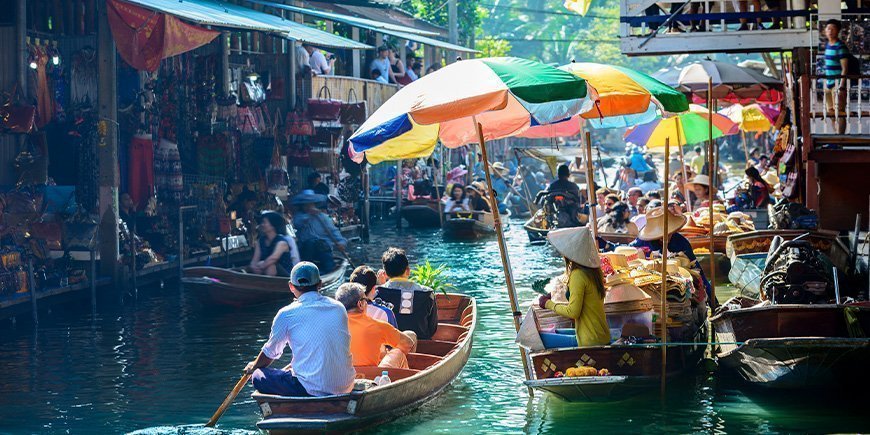
When in Bangkok, a visit to the floating markets is pretty much a must. Imagine boat after boat floating past selling everything from pineapple and lovely dishes of curry to souvenirs. And yes – you’re floating yourself!
As you rest your legs, you can sit back and experience the unique culture of the floating markets, buy some souvenirs to take home with you and enjoy a unique and fascinating experience.
There are many different floating markets around Bangkok, and even when they’re outside the city, they’re definitely worth the trip. This untraditional type of market is very different from the traditional type and will be one of the things you remember, especially once you’re back home.
A whole host of experiences await you at the Asian markets. They provide a great insight into the culture you are visiting and you’re guaranteed to find some good gifts to take home with you or souvenirs for yourself.
If you’re in any doubt about which Asian country to visit, please feel free to contact our travel specialists who are on hand to help you choose the best holiday.
TourCompass – From tourist to traveller
